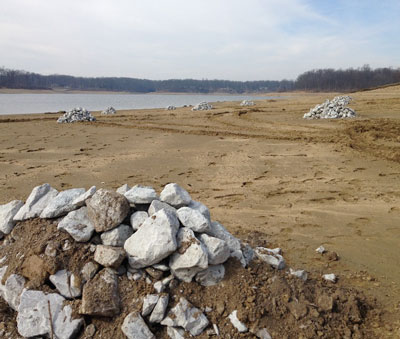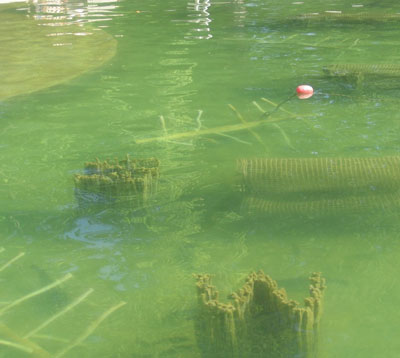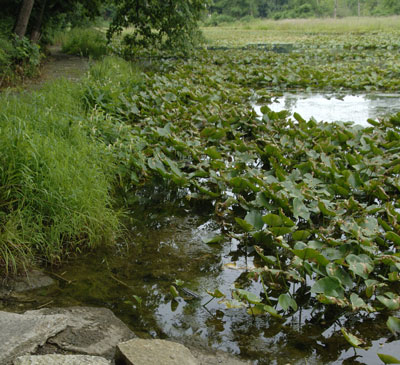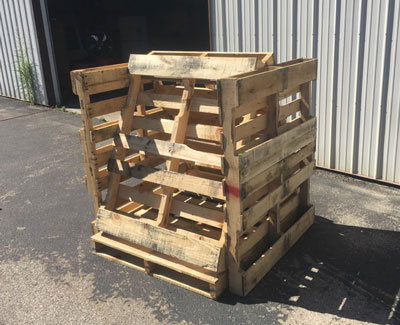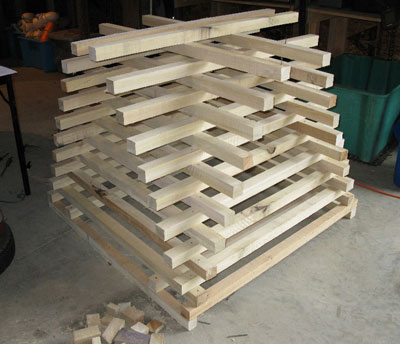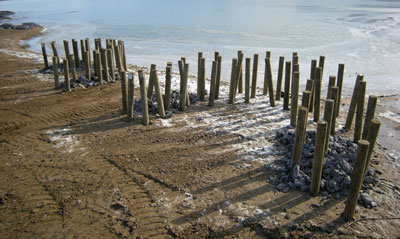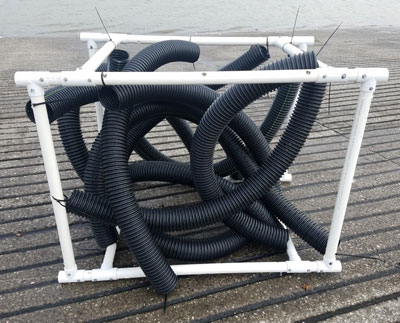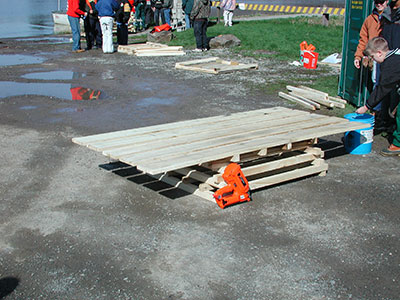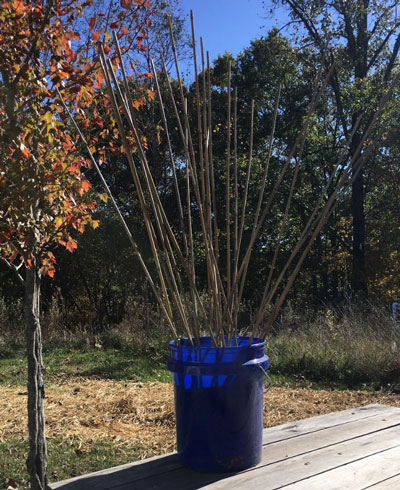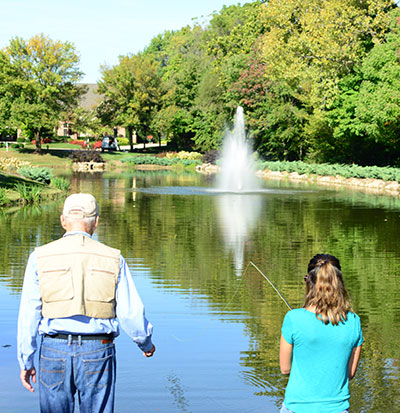
Healthy ponds and lakes take into account a pond’s physical, chemical, and biological features. This page provides information and links for those interested in managing their private ponds or lakes.
What is a private pond?
A private pond does not just mean the land around the pond or lake is privately owned. Many lakes, especially natural lakes, are considered public even if there is no public access to them. These guidelines are primarily designed for small ponds legally dug by private individuals. They do not apply to the numerous lakes throughout the state that are typically considered natural water bodies, such as impounded waterways and public freshwater lakes. A list of the public freshwater lakes is available at on.IN.gov/where2fish.
Habitat improvements or changes to these lakes may require special permits. Always check for recent rules, laws, and local ordinances before you make any changes to your pond.
Construction of seawalls and underwater beaches, other shoreline improvements, placement of fish attractors, and dredging projects almost always require a permit from the DNR Division of Water.
Resources for managing private ponds and lakes
Find more information regarding Fish Pond Management in DNR’s Fish Pond Guide or watch a recorded webinar.
Want to construct a pond? Visit Purdue University Extension’s Pond Construction and Maintenance website.
Have questions about dam construction, maintenance, or regulatory information? Visit the DNR Division of Water Dams & Levees website.
Need fish? DNR will not provide fish for your pond but the following document was produced through a partnership with Purdue University to assist pond owners with stocking fish. Check out our list of pond fish and grass carp vendors.
Have issues with aquatic vegetation? Check out our list of licensed suppliers. Purdue Extension also has a guide for aquatic plant management.
Having problems with wildlife in or around your pond? Learn about solving wildlife issues. Adding structure to your pond may help.
Had a fish kill? Learn about fish kills.
Want to test your water? Find water testing information.
Have more questions? District fisheries biologists can provide advice and recommendations for private pond or lake owners.
Adding structure to private ponds
What is structure?
Structure provides surface area for organisms like macroinvertebrates and algae to grow on, in addition to providing cover for fish. Structure also provides places for fish to hide, eat, or spawn. Structure can occur naturally, when trees fall into ponds or when stumps or other materials are left when a pond is filled, or by natural aquatic vegetation growing in the ponds. Some ponds don’t have naturally occurring structure, so providing man-made versions can be important for creating and/or maintaining healthy fish populations and better fishing opportunities.
General Considerations
- Many types of man-made structures are available but it is important to never use potentially toxic materials such as tires to try to create a habitat, which can do more harm than good in the long term. Any plastic used needs to be safe for water. For instance, plastics that are used to transport drinking water are preferred because they do not leach.
- Using materials that can withstand long-term submersion in water is important, such as plastic buckles that won’t rust like metal.
- The structures listed here generally need flat surfaces to function correctly. If your pond is sloped and meets at a point, your pond may not be the best fit for habitat structures.
- Most ponds 12 feet deep or less can have structure placed almost anywhere that won’t impede navigation; however, some ponds more than 12 feet deep develop a bottom layer of water with no oxygen in the summer. Fish won’t live in the oxygen-deprived water layer, so placing structures at those depths won’t be helpful. If your pond is deeper than 15 feet, contact your local fisheries biologist for guidance on habitat structures at fishing.IN.gov.
The following is not a comprehensive list of potential structure types but gives examples of common options that could be deployed in private ponds. You can print a copy of the above information at Providing Structure for Fish in Private Ponds. Some companies make pre-fabricated structure options that may be purchased. Pond owners may explore these options too; however, they are not outlined here.
- Rock Piles (or Reefs)
- Felled Shoreline Trees
- Brush Piles, Log Piles, or Stumps
- Aquatic Vegetation
- Pallet Structure
- Pennsylvania Porcupine Crib
- Pennsylvania Porcupine Crib Junior
- Pennsylvania Post Cluster Structure
- Hoosier Cube
- Pennsylvania Largemouth Bass Nesting Structure
- Pennsylvania Turtle Basking Habitat Platform
- Artificial Shrubs

